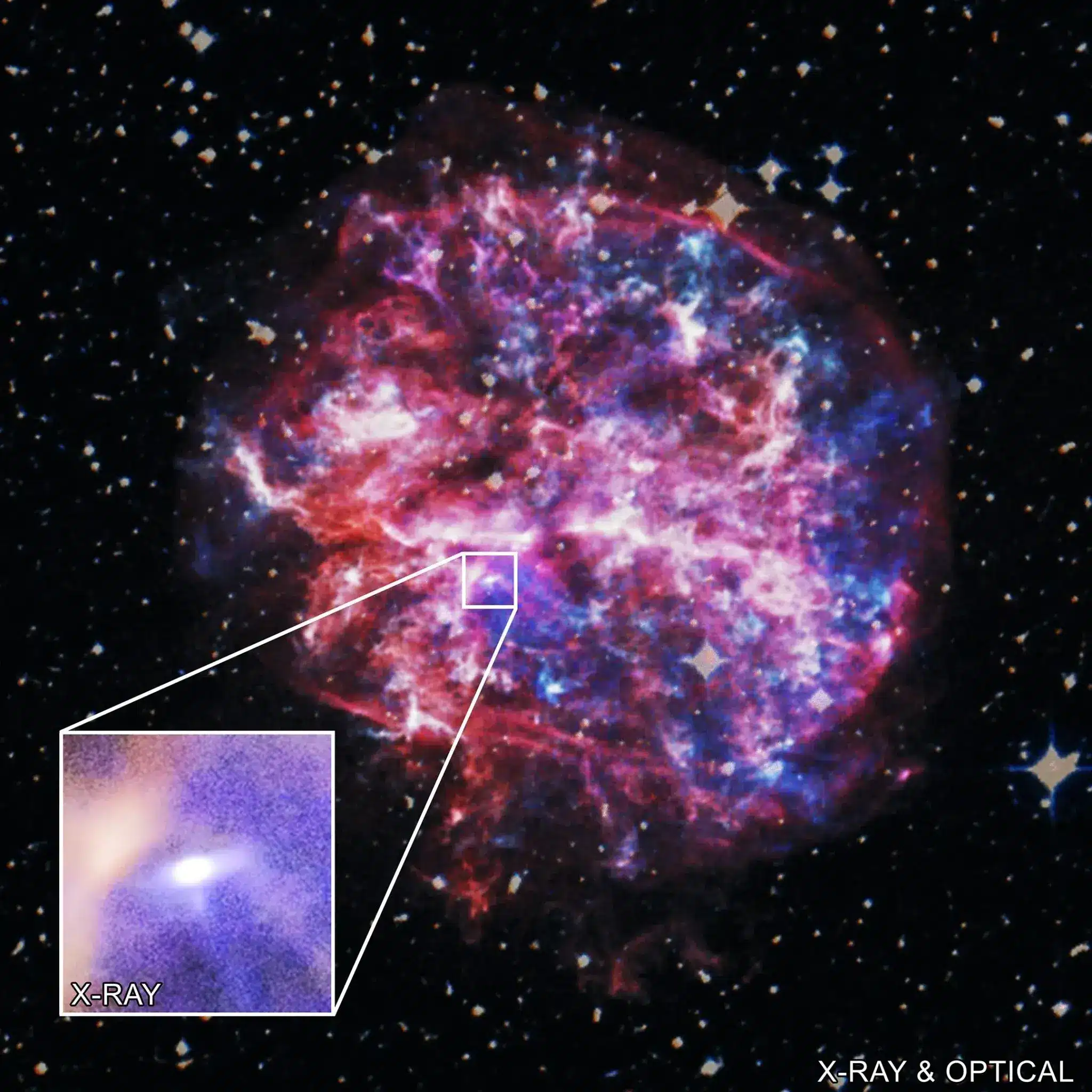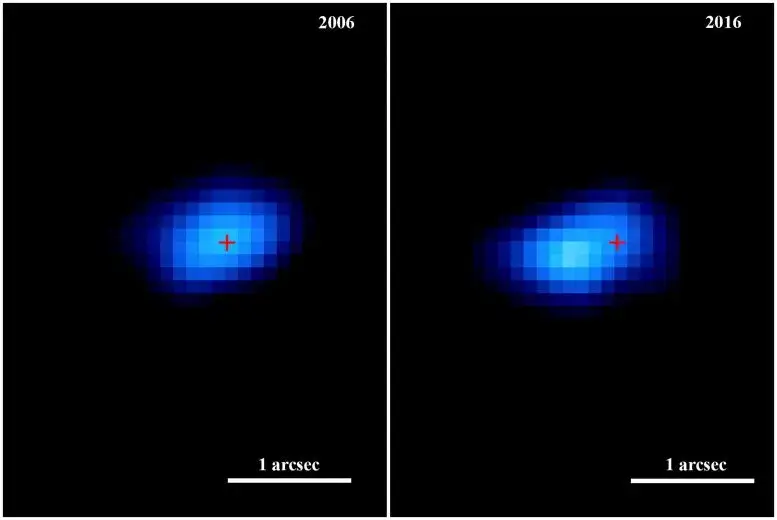Spotted by NASA's Chandra X-ray Observatory, this interstellar pilot is one of the fastest objects of its kind ever observed. This surprising result adds information to astronomers about how some of the largest stars end their lives

A hot young pulsar was discovered moving through the Milky Way at a speed of more than one and a half million kilometers per hour. This interstellar pilot, spotted by NASA's Chandra X-ray Observatory, is one of the fastest objects of its kind ever observed. This surprising result adds information to astronomers about how some of the largest stars end their lives.
Pulsars are rapidly spinning neutron stars that form when certain massive stars run out of fuel and collapse and explode. This pulsar is moving rapidly through the remnant of the supernova explosion that created it, which is named G292.0+1.8 and is about 20,000 light-years from Earth.
"We directly saw motion of the pulsar in X-rays, something we could only do using Chandra's very sharp vision," said Xi Long, who led the study. Because it is so far away, we had to measure the equivalent of the width of a quarter dollar coin from a distance of about 24 km to see this movement."

To make this discovery, the researchers compared images of G292.0+1.8 taken by Chandra in 2006 and 2016. From the change in the pulsar's position over the past 2.25 years, they calculated that it was moving at least 30 million km/h from the center of the supernova remnant to the left down. This speed is about XNUMX% higher than a previous estimate of the speed of the pulsar which was based on an indirect method, by measuring the distance of the pulsar from the center of the explosion.
The newly determined pulsar velocity suggests that G292.0+1.8 and its pulsar may be much younger than astronomers previously thought. Xi and his team estimate that G292.0+1.8 exploded about 2,000 years ago, not 3,000 years ago as previously thought. Several cultures around the world recorded supernova explosions at the time, which opens up the possibility that G292.0+1.8 was observed directly.
"We only have a handful of supernova explosions that also have a reliable historical record associated with them," said co-author Daniel Patenod, "so we wanted to see if we could add G292.0+1.8 to that group."
But G292.0+1.8 is below the horizon for most Northern Hemisphere cultures that would have seen it, and there are no recorded examples of a supernova observed in the Southern Hemisphere in the direction of G292.0+1.8.
In addition to the additional information about the age of G292.0+1.8, the research team also looked at how the supernova gave the pulsar its powerful kick. There are two main possibilities, and both involve material that is not ejected by the supernova equally in all directions. One possibility is that the neutrino particles created in the explosion were ejected from it asymmetrically, and the other is that the fragments from the explosion were ejected asymmetrically. If the matter has a preferred direction the pulsar will be kicked in the opposite direction because of the principle in physics called conservation of momentum. The degree of asymmetry of the neutrino needed to explain the high velocity would be extreme, and this supports the possibility of the explosion fragments, and also corresponds to a previous observation that the pulsar moves in the opposite direction to most of the gas emitting X-ray radiation.
More of the topic in Hayadan:

4 תגובות
There is no such thing as a pulsar, just a pulsar, it's all scientists' nonsense. Read and memorize our Torah and cultivate wisdom.
A supernova explosion cannot be unidirectional but as a ball. The star is a so-called errant star that, due to the forces of gravity or due to interaction with Horskhor, reached such a high speed of movement even before the supernova from which it was created. The momentum of the movement will be preserved even after the explosion and this pulsar will be ejected from the galaxy in a few hundred thousand years with me I wrote a book called the universe and us
20,0000 + 2000, light years
It cannot be that a pulsar that is 20000 light years away exploded two thousand years ago and was observed